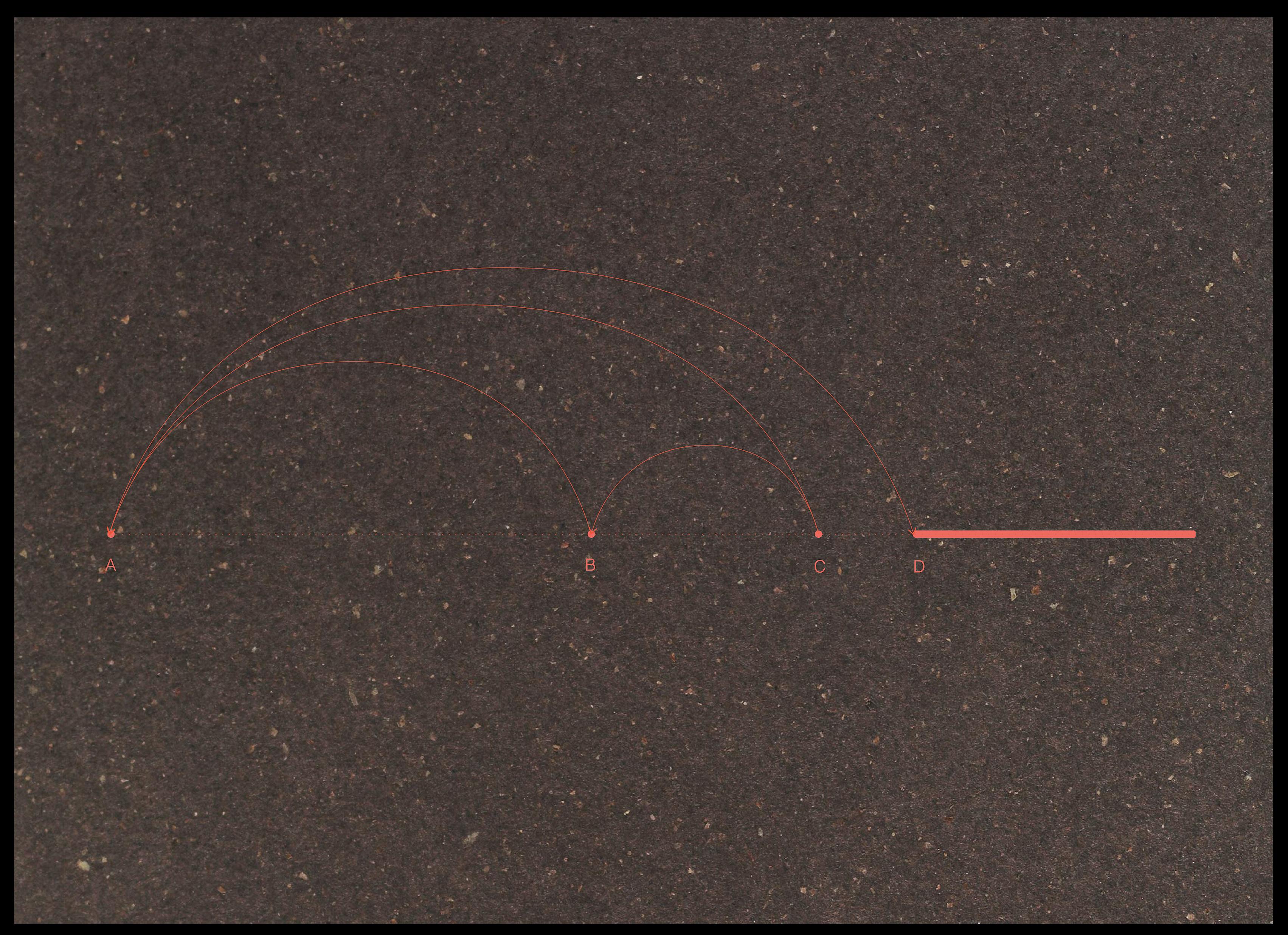
3 minute read
Temporality concept
As many geologists have proposed, we are now living in the age of the Anthropocene – an unstable geological epoch in which humans and their actions are the main driver of catastrophic environmental change. In this conceptualisation of temporality, the future is no longer preceded by the present, but it is rather approaching, impacting upon, or even becoming the present. The catastrophe matters, but perhaps what matters most is the revelation of what that forthcoming catastrophe entails.This challenges both our spatial and temporal ontologies, bending Euclidean space to register as a kind of simultaneity, rather than linear chronology. Experiencing the crisis through the perspective of time challenges our anthropocentric perception and notions of progress Viewing time as a point allows for switching very quickly between time and almost coexisting in these realms.

Advertisement
MONSTERS
MORE-THAN-HUMAN / TECHNOLOGY/AI
NON-HUMANS
55 000 000 BP 11 700 BP 1760 1792 1817 1800
3. Extinction of Pleistocene megafauna 1840 1851 1914 1918 1870 1879 1884 1891 1896 1905
Famine in Russia The US carries out the first experiments on inducing artificial rainfall by means of artillery projects. Fedorov approaches Tolstoy to support the idea. 1920 1939 1946 1949 1957 1960 1963 1968 1972 1979 1986 1991 1996 2007 2014 2016 2019 2050 2100
Stalin’s Great Plan for the Transformation of Nature Plan of Northern river reversal abandoned Geoeingineering (carbon capture and solar radiation management) key part of the IPCC Sixth Assessment Report
UN moratorium on geoeingineering
Pleistocene Park established ExxonMobil announces Carbon Capture technology insufficient northern migration incentives result in automated agriculture optimization of ecosystems
Carbon Capture/CO2 removal and solar management strategies deployed
Increased Rewilding Practices
3.2°C. bison, moose and wild wild horses visibly transform the landscape
30 000 year old Pithovirus sibericum discovered in Permafrost
migration patterns of the reindeer and their Nenet herders disturbed Anthrax outbreak in the Yamal Peninsula affecting dozens of people and over 2000 reindeer some species are able to endure these changes and survive, others perish - organisation of life is regulated in accordance to new conditions 3021
4. more-than-human environment
GHOSTS
INDUSTRIAL EXTRACTIVISM
ECOLOGY AND INFRASTRUCTURE
The first Industrial Revolution (coal, railroads, land clearing speed up greenhouse gas emissions) The second Industrial Revolution The Russian Empire runs a monopolised oil industry in Baku
Late Pleistocene
Paleocene-Eocene Thermal Maximum used as a case study for understanding current climate warming trends
Level of CO2 in the atmosphere, as later measured in ancient ice, is about 290 ppm (parts per million). Mean global temperature is roughly 13.7°C.
The timeline reveals that scales are in a constant state of flux and they do not obey fixed ontologies. This experience exposes new types of geological formations that emerge throughout the whole game timeline - from transformations of the core to the surface and into the atmosphere.
average Siberian warming
average global warming 0°C. large oil deposits found in the Volga and Urals region Yamal nartural gas deposits discovered oil spill at Norilsk peak oil peak gas
low-carbon hydrogen blended into gas grid
Exploitation of Western Siberian oil resurces begins
2. Carbon Liberation Front
Russia claims the area around North Pole by planting a flag at the bottom of the Arctic ocean
Second oil Energy Crisis. Strengthened environmental movement encourages renewable energy sources, inhibits nuclear energy growth.
1760-1840 gas leak at the Bovanenkovo gas field spotted from space, 93t CH4 / h
1.2°C.
Launch of Sputnik 1, the first artifical Earth satellite. Revelle finds that CO2 produced by humans will not be readily absorbed by the oceans.
The level of CO2 in the atmosphere is 315 ppm. Mean global temperature (five-year average) is 13.9°C.
Batagaika crater starts to sink due to thawing permafrost following deforestation First cryovolcanic eruption crater discovered in Siberia due to high pressure methane release first Siberian wildfires
roads warping, buildings fall apart, trees tumble caused by permafrost collapse
1. melting permafrost
permafrost soils hold as much carbon as contained in the atmosphere - about 1.6 trillion tonnes decomissioning of Bovanenkovo gas field
end of fossil fuel extraction The transition to renewable sources of energy exhausts Greenland’s mineral mines
1.5 million square miles of permafrost disappear with every additional 1°C of warming
permafrost soils hold 56 781 tonnes mercury post-Anthropocene landscapes
Tundra converted into Taiga 29% of CO2 released before 2100 still in the atmosphere
Level of CO2 in the atmosphere >1000 ppm
lakes will increase by 50% in a high emission scenario










